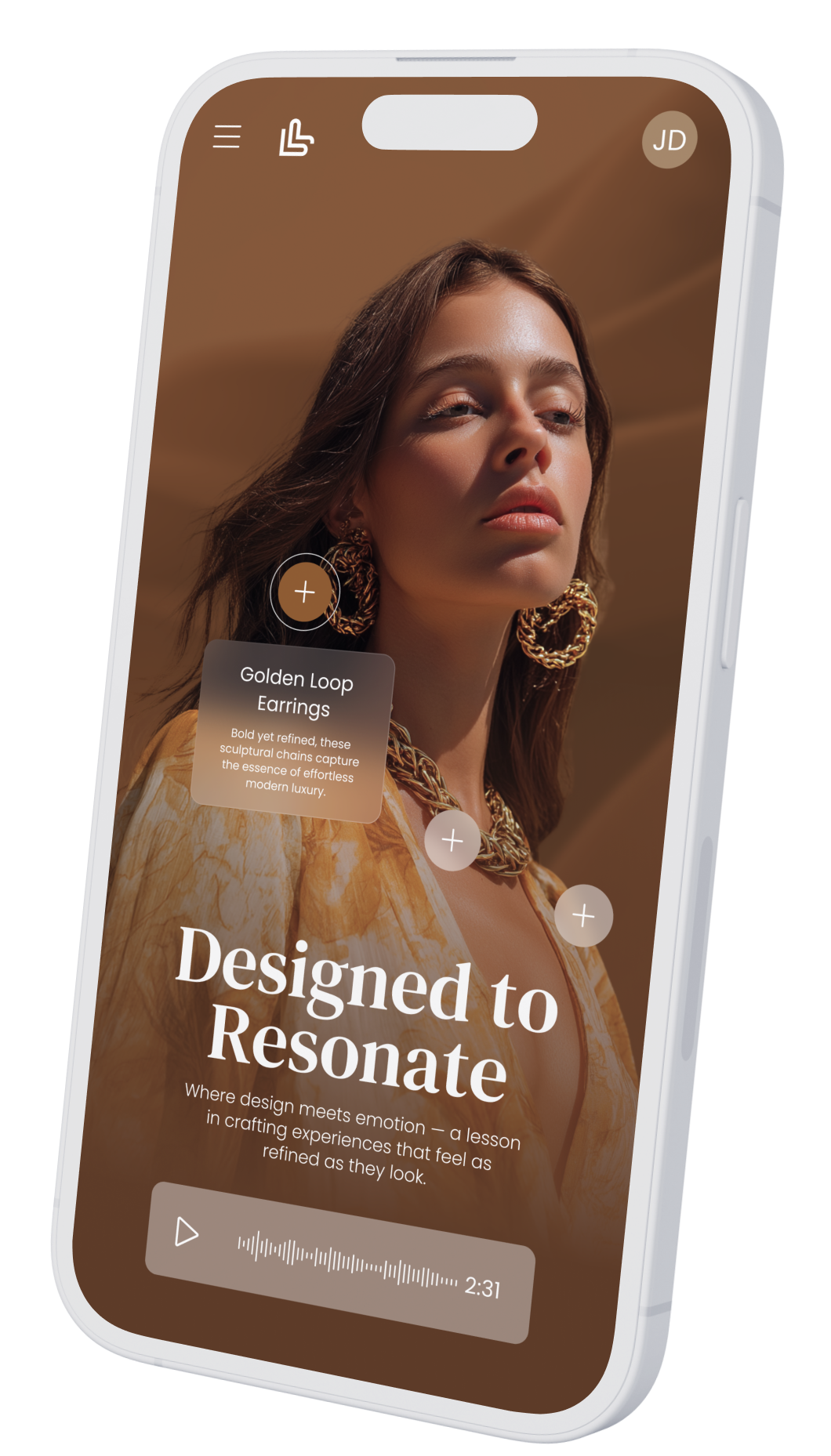Cosmetics Product Launch Training
Cosmetics Product Launch Training: How to Prepare Retail Teams Quickly and Effectively
A successful product launch in cosmetics depends on how fast and how well retail teams can absorb key knowledge and translate it into confident, client-facing storytelling.
To prepare them effectively, training must be concise, visual, and immediately actionable — from nano-modules that highlight the product’s hero benefits to short video demonstrations, comparison cheat sheets, and quick role-play scenarios.
Delivering content in mobile-first formats ensures teams can learn on the go, while gamification and micro-assessments reinforce retention.
When training is engaging, efficient, and aligned with the brand’s DNA, store teams step onto the floor ready to educate, inspire, and convert curiosity into sales from day one.
Why You Should Adopt a Structured Cosmetics Product Launch Training Strategy
In fast-paced retail environments, new products are the lifeblood of business growth.
Yet, each launch presents a familiar challenge for learning and development (L&D) teams: how to ensure that every employee from store associates to regional managers can confidently represent the new Cosmetics product on day one.
Effective product launch training goes far beyond sharing technical specifications or campaign details. It’s about equipping teams with the right knowledge, confidence, and communication skills to deliver an on-brand, customer-focused experience. With the right learning approach, your launch training can be both rapid and high-impact — ensuring consistency across all locations and roles.
The Benefits of Rapid eLearning for Cosmetics Product Launches
Traditional in-person or classroom-style training can’t always keep pace with the retail calendar.
Rapid eLearning design allows L&D teams to produce engaging, concise, and mobile-friendly learning materials in days rather than weeks.
Key benefits include:
Speed to market: Quickly deliver new content across global retail teams, ensuring no one is left behind.
Scalability: Launch updates simultaneously across multiple regions and store formats.
Consistency: Maintain brand accuracy and message alignment.
Flexibility: Allow employees to learn at their own pace, anytime, anywhere.
Performance support: Offer easy access to job aids and bite-sized learning at the point of need.
By integrating rapid eLearning with your launch strategy, you not only accelerate training rollout but also enhance long-term product adoption.
Set Clear Learning Objectives
Before creating content, it’s vital to define the specific outcomes you want your training to achieve.
Are you aiming for deeper product understanding, improved customer storytelling, or greater upselling confidence?
Set clear, measurable learning objectives such as:
“Retail associates can identify three key features and two unique benefits of the new Cosmetics product.”
“Employees can match the right product to different customer profiles.”
These objectives will guide your content creation and help ensure all materials stay focused on driving performance.
Identify Pain Points and Knowledge Gaps
Each launch has its challenges. Perhaps the Cosmetics product introduces a new technology or targets a different customer segment.
By identifying knowledge gaps early, you can adapt your training to focus on the areas that will most impact sales success.
Use short surveys, manager feedback, or previous Cosmetics product performance data to pinpoint these gaps. This not only streamlines your training but also ensures your content feels directly relevant to your team’s daily experience.
Create Engaging, Multi-Format Content
Retail employees are often pressed for time. Training must be efficient, interactive, and designed with adult learning principles in mind.
How to create engaging content:
Vary the formats: Combine micro-videos, infographics, and quick quizzes to sustain attention.
Incorporate branching scenarios: Let learners make decisions in simulated customer interactions, helping them apply knowledge in context.
Include self-assessment checkpoints: Allow participants to evaluate their own readiness and identify areas for improvement.
Apply storytelling: Share product origin stories or real customer success cases that make the new launch more memorable.
Branded design elements and storytelling create continuity with your brand identity, helping each module feel like part of the broader retail experience.
Leverage Role-Playing Sessions for Deeper Learning
Even in digital formats, role-playing can be a powerful way to practice clienteling and sales conversations.
By simulating real-world customer interactions, learners can explore how to position the new Cosmetics product effectively while reinforcing brand tone and empathy.
For example, an online branching scenario might ask the learner to handle three types of customers, one curious, one hesitant, one loyal and adapt their messaging accordingly. This builds confidence and strengthens the customer-facing skills that drive sales.
If possible, complement eLearning modules with short virtual workshops or in-person follow-ups where teams can role-play and share feedback in real time.
Personalise Learning Paths
Not all employees need the same level of detail. A beauty advisor in a flagship store may require deeper technical knowledge, while a seasonal associate might only need an overview.
By personalising learning paths, you allow each learner to progress at their own pace and focus on content most relevant to their role.
Advanced learners can explore in-depth modules or leadership case studies, while newcomers benefit from structured, bite-sized introductions.
This approach reflects modern adult learning principles: autonomy, relevance, and experience-based application.
Encourage Collaboration and Knowledge Sharing
Successful launches thrive on team collaboration.
Encourage employees to share tips, feedback, and customer stories through digital communities or discussion boards within your LMS.
This peer-driven knowledge sharing fosters engagement and strengthens internal networks. It also provides valuable insights to L&D teams — revealing which aspects of the product resonate most with staff and which areas may need more clarity or reinforcement.
Recognize and reward employees who contribute valuable insights or innovative selling ideas; this reinforces a sense of ownership and pride in the brand.
Provide Point-of-Need Performance Support
Even the best training can fade over time without reinforcement.
Ensure that employees can revisit key materials at the exact moment they need them for example, right before a client demonstration or product presentation.
Offer mobile-optimised “cheat sheets,” FAQs, or two-minute refresher videos that summarize essential product knowledge.
This point-of-need performance support ensures employees stay confident and accurate when engaging customers.
Consider embedding QR codes on packaging or back-office materials that link directly to micro-learning content or key feature breakdowns.
Monitor Progress and Adjust as Needed
Collect data throughout the training cycle. Track completion rates, quiz performance, and feedback forms to understand how your teams are engaging with the material.
Look for trends, perhaps some regions have lower completion rates or specific modules generate more questions. Use this data to adjust future launch content, optimise pacing, and close identified skill gaps.
Combine this quantitative data with qualitative insights from store managers and employees. Together, they form a holistic view of learning effectiveness and readiness.
Set Your Team Up for Success
A Cosmetics product launch is more than an event, it’s a coordinated effort that requires preparation, alignment, and ongoing reinforcement.
When your retail teams are trained quickly and effectively, they not only understand the product but also represent your brand with confidence and authenticity.
By blending rapid eLearning techniques, personalized learning paths, role-playing scenarios, and collaborative learning, you create a scalable, agile training model that supports continuous improvement and long-term brand consistency.
The result? Launches that run smoother, products that gain momentum faster, and employees who are empowered to deliver exceptional customer experiences — every single time.
Launch-Ready in Days: How The Learning Lab Powers Fast & Effective Cosmetics Product Training
When a new product hits the market, cosmetics teams need instant clarity, perfect storytelling, and absolute confidence.
The Learning Lab LMS is built precisely for this reality. With mobile-first modules, InstaLearning formats, and bite-size hero-product content, retail teams can learn quickly — anywhere, anytime.
Visual storytelling, video tutorials, comparison cards, and AI-powered translation help global markets stay aligned, while gamification and micro-assessments keep teams motivated and ready to sell.
The Learning Lab turns every launch into a seamless, branded learning experience that accelerates readiness and drives conversion from day one.
Why The Learning Lab Is Perfectly Designed for Cosmetics Product Launch Training
Mobile-First & Fast: Nano- and microlearning modules deliver essential product knowledge in minutes, not hours.
Hero Product Storytelling: Visual templates highlight benefits, ingredients, textures, application steps, and key differentiators.
Instant Global Rollout: AI-powered translation ensures every market is ready simultaneously — with accuracy and brand tone preserved.
Video-First Training: Tutorials, swatch videos, animations, and demonstrations built directly into the LMS.
InstaLearning Carousels: Social-media-inspired formats maximise engagement and boost retention.
Gamification for Motivation: Badges, leaderboards, and quick quizzes accelerate adoption and make learning fun.
Real-Life Practice: Scenarios, role-plays, and clienteling prompts help associates turn features into benefits on the floor.
Perfect for Field Teams: On-the-go training they can open on mobile during store visits.
Cosmetics-Specific Templates: Shade charts, ingredient breakdowns, usage steps, comparison “hero vs. competitor,” before/after formats.
Launch Readiness Dashboards: Track completion, engagement, and activation levels across regions and boutiques instantly.






